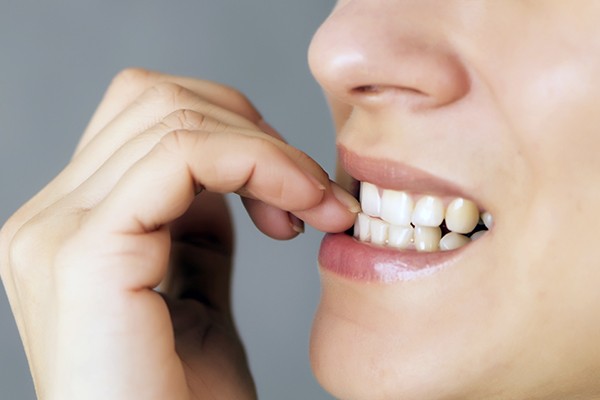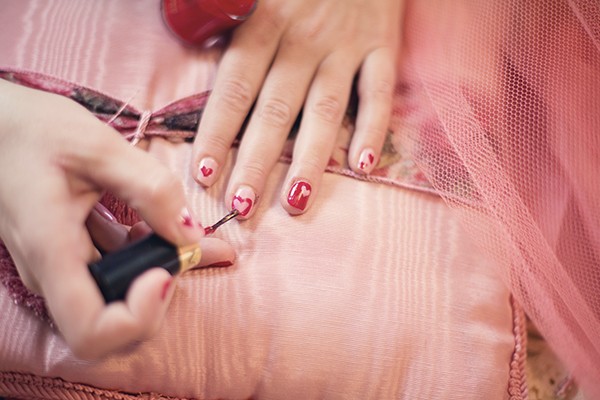
Your fingernails are some of the most noticeable parts of your body because it's hard to hide them unless you're wearing gloves or shoving your hands in your pockets. Fingernails are also something medical experts look at if they want to determine whether a person is practicing proper hygiene.
For example, if the fingernails are very long and dirty, those indicators may be warning signs that a person isn't practicing good personal care techniques. Similarly, a psychologist may look at a person's fingernails and see if they're compulsively bitten.
If that's the case, that individual may be overly anxious and biting their nails as a coping mechanism.
If you're a person who struggles with nail-biting and often feel like you'll never overcome the habit, don't despair. Many people have achieved good results and finally curbed this well-known habit through self-hypnosis.
It's a technique that shares some characteristics with meditation. Keep reading to learn how you can get started with nail-biting self-hypnosis and potentially turn it into a technique that helps you stop biting your nails for good.
Make Yourself and the Room Comfortable
Self-hypnosis is a state of mind that can come naturally, provided you feel at ease enough for it to happen. That's why you need to make sure to set up your environment so it's as comfortable as possible before you start trying to hypnotize yourself.
For example, get into comfortable clothes. Choosing the kind of attire you normally wear to the gym is a good start because that clothing isn't likely to fit too tightly or have lots of snaps, buttons or other features that could become uncomfortable.
Next, find a chair that you like to sit in, and preferably one with a straight back so you'll have good support throughout your session. Ideally, pick a chair that allows you to comfortably keep both feet on the floor.
If you cross your legs, that pose could restrict your blood circulation and cause you to experience uncomfortable tingling that might take your mind away from what you're trying to achieve through self-hypnosis.
After that, make sure the lighting in the room is not distractingly bright. You may even prefer to choose a room that has a large window so that you might not even have to use artificial sources of light. Some types of lighting, such as the fluorescent variety, can be too harsh to the point where it makes people uneasy.
Finally, adjust the temperature in the room so there's no chance you'll become too hot or too cold during self-hypnosis. A portable heater or fan is a good solution if you want to change the temperature specified in the space where you'll be meditating, without disrupting other members of your household.
Figure Out Your Triggers
Most self-hypnosis involves an element of suggestion, although some affirmations may be used as well. But, in order for both of those things to be maximally useful, you need to try to uncover the triggers that cause you to bite your nails.
It might be helpful to do that if you create an ongoing note on a piece of paper or within a note-taking app on your smartphone and keep track of all the times you catch yourself biting your nails.
After doing that for a week or two, you'll probably notice there are certain events or other specifics that make you lift your finger to your mouth and start nibbling.
Maybe it's purely a stress response and you bite your nails because you're nervous about meeting with new clients, going out for coffee with a new friend you don't know well yet or trying your hand at a new hobby and feeling a little overwhelmed.
However, you might also just bite your nails because you're bored. Once you know what causes you to bite your nails, you're ready to start writing catchy phrases to utter to yourself or out loud during self-hypnosis, otherwise known as mantras.
Make Your Mantras
Let's say you just completed the step above and realized that you usually bite your nails during situations that make you feel inadequate. If that's true, an appropriate thing to keep in mind during self-hypnosis is the phrase, "I am ready to thrive during every task I set out to do."
You might also say "Biting my nails doesn't actually help me cope."
If it turns out you just bite your nails out of boredom, think about creating a mantra such as "Biting my nails doesn't actually occupy me," and reminding yourself, "There are better ways to spend my time that keep my nails looking nice."

Look for Audio-Based Resources
In addition to the personal mantras you come up with, there are audio resources you can buy or download for free that are specially targeted towards people who want to use self-hypnosis to stop biting their nails.
It's an especially good idea to look for those if you're having a hard time thinking of phrases on your own or just aren't happy with the ones you've thought of so far.
Keep in mind that the people responsible for creating those audio recordings usually put a substantial amount of effort into researching human behavior to determine which phrases are most effective.
Many even have soothing background tracks, so if you're having trouble relaxing enough to get into a hypnotized state, the carefully chosen soundtracks might encourage you to unwind.
Consider Taking a Class or Looking for Other Educational Options
If you're feeling a little nervous about diving into the practice of self-hypnosis completely on your own, it's a good idea to see if there are any community centers, libraries or gyms that might offer free or low-cost classes for people who are interested in learning more about how to hypnotize themselves.
Although the practice is used in the context of nail-biting, it also helps people lose weight, stop smoking, become more confident and more. That means even if you don't come across a course that is specifically for nail biters, you'll probably find you're able to learn a lot from even a general course about hypnosis.
Alternatively, try to find instructional resources on streaming sites like YouTube and Vimeo. Those are useful if you want to learn the basics of self-hypnosis for nail-biting but think you'd feel more comfortable staying in your home instead of being in a public place.
Need help keeping your motivation up while learning the basic principles? Consider going through the process with a friend.
In addition to the tips you've just read, always remember that just like almost anything else, self-hypnosis is something you'll get better at with time. You can't expect to fall into a trance-like state within a few seconds the first time you try it, but with enough patience and perseverance, you should notice your results pay off.
The most obvious sign of your successful efforts will be long, healthy nails!


